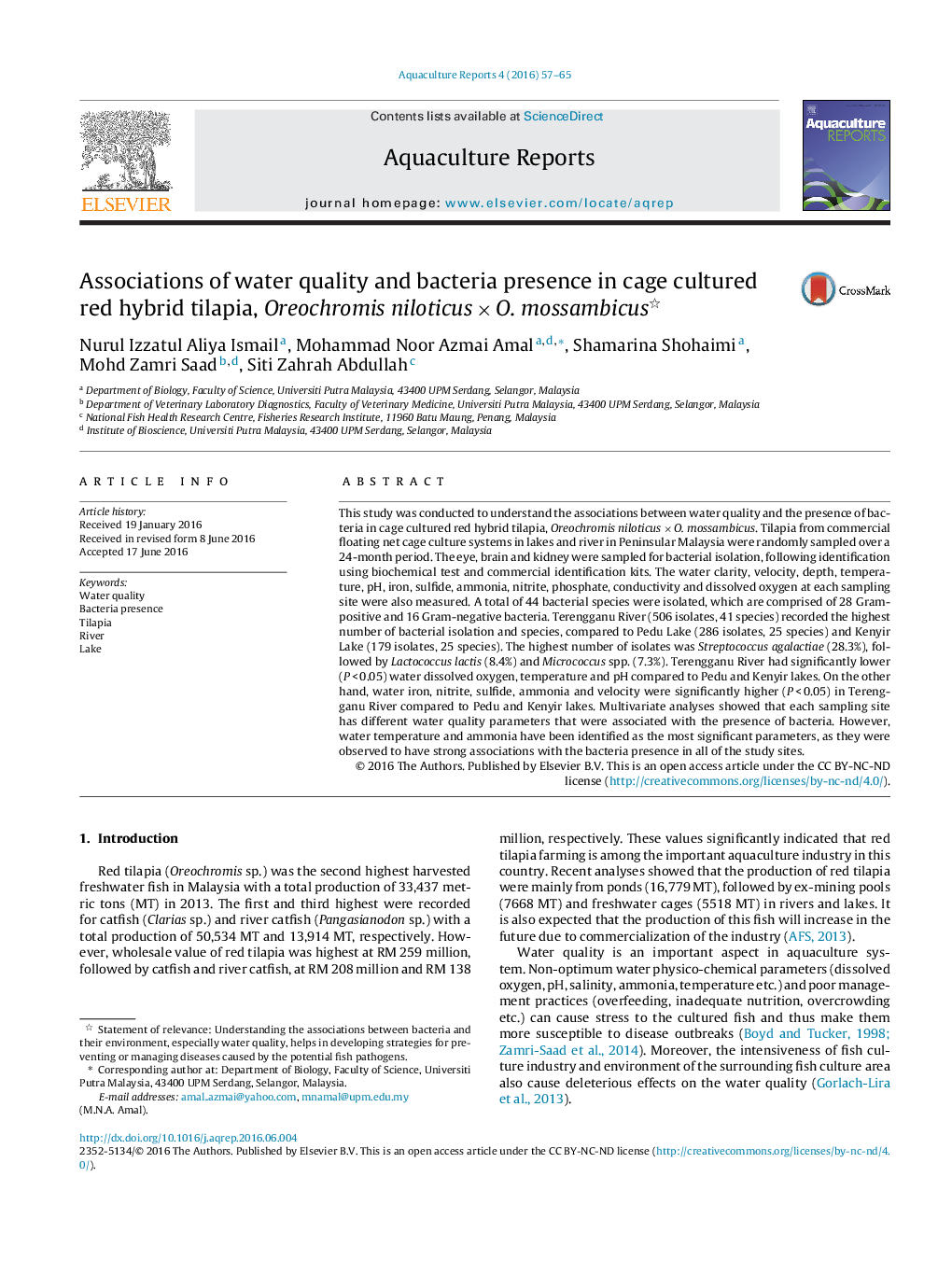| Article ID | Journal | Published Year | Pages | File Type |
|---|---|---|---|---|
| 4437945 | Aquaculture Reports | 2016 | 9 Pages |
•Various pathogenic and non-pathogenic bacteria were isolated from cage cultured red hybrid tilapia.•Water temperature and ammonia were strongly associated with the presence of bacteria.•Understanding the association between bacteria and their environment will help us to manage the diseases.
This study was conducted to understand the associations between water quality and the presence of bacteria in cage cultured red hybrid tilapia, Oreochromis niloticus × O. mossambicus. Tilapia from commercial floating net cage culture systems in lakes and river in Peninsular Malaysia were randomly sampled over a 24-month period. The eye, brain and kidney were sampled for bacterial isolation, following identification using biochemical test and commercial identification kits. The water clarity, velocity, depth, temperature, pH, iron, sulfide, ammonia, nitrite, phosphate, conductivity and dissolved oxygen at each sampling site were also measured. A total of 44 bacterial species were isolated, which are comprised of 28 Gram-positive and 16 Gram-negative bacteria. Terengganu River (506 isolates, 41 species) recorded the highest number of bacterial isolation and species, compared to Pedu Lake (286 isolates, 25 species) and Kenyir Lake (179 isolates, 25 species). The highest number of isolates was Streptococcus agalactiae (28.3%), followed by Lactococcus lactis (8.4%) and Micrococcus spp. (7.3%). Terengganu River had significantly lower (P < 0.05) water dissolved oxygen, temperature and pH compared to Pedu and Kenyir lakes. On the other hand, water iron, nitrite, sulfide, ammonia and velocity were significantly higher (P < 0.05) in Terengganu River compared to Pedu and Kenyir lakes. Multivariate analyses showed that each sampling site has different water quality parameters that were associated with the presence of bacteria. However, water temperature and ammonia have been identified as the most significant parameters, as they were observed to have strong associations with the bacteria presence in all of the study sites.
